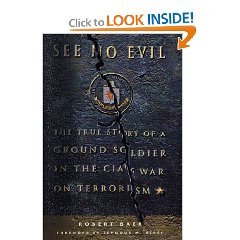At a technical level, the author provides some really excellent real-world, real-war annecdotes about situations where clandestine reporting from trusted operations officers has not been accepted by their own superiors in the absence of technical confirmation (imagery or signals). As he says, in the middle of a major artillery battle and break-out of insurgent elements, screaming over the secure phone, “its the middle of night here”. We've all known since at least the 1970's that the technical intelligence side of things has been crushing human sensibility, both operational and analytical, but this book really brings the problems into the public eye in a compelling and useful manner.
At another level, the author uses his own investigation for murder (he was completely cleared, it was a set-up) by the Federal Bureau of Investigation, and at one point by the Secret Service, to shed new light on the complete break-down of internal security processes within the CIA. At its lowest point, he is pressured by DO management with a psychological evaluation to determine his fitness for duty–shades of Stalinism! I know this technique, of declaring officers unfit for duty based on psychological hatchet jobs, to be a common practice over the past two decades, and when Britt Snider was appointed Inspector General at CIA, I told him this was a “smoking gun” in the 7th floor closet. That it remains a practice today is grounds for evaluating the entire management culture at CIA.
There is a fourth story in the book, a truly interesting account of how big energy companies, their “ambassadors” serving as Presidential appointees within the National Security Council, and corrupt foreign elements, all come together. In this the spies are not central, so I leave it as a sidenote.
In my capacity as a reviewer of most intelligence-related books within these offerings, I want to make it clear to potential buyers of this book that the author is not alone. His is the best, most detailed, and most current accounting of the decrepit dysfunctionality of the clandestine service (as I put it in my own book's second edition), but I would refer the reader to two other books in particular: David Corn's “Blond Ghost: Ted Shackley and the CIA's Crusades”–its most memorable quote, on covert action in Laos, being “We spent a lot of money and got a lot of people killed, and we didn't get much for it.”–and Evan Thomas' “The Very Best Men–Four Who Dared: The Early Years of the CIA”–its best quote: “Patriotic, decent, well-meaning, they were also uniquely unsuited to the grubby, necessarily devious world of intelligence.” There are many other books, including twelve (12!) focused on reform and recommended by the Council on Intelligence.





